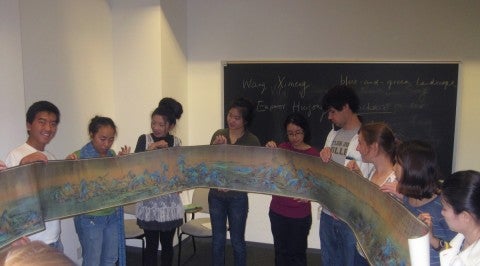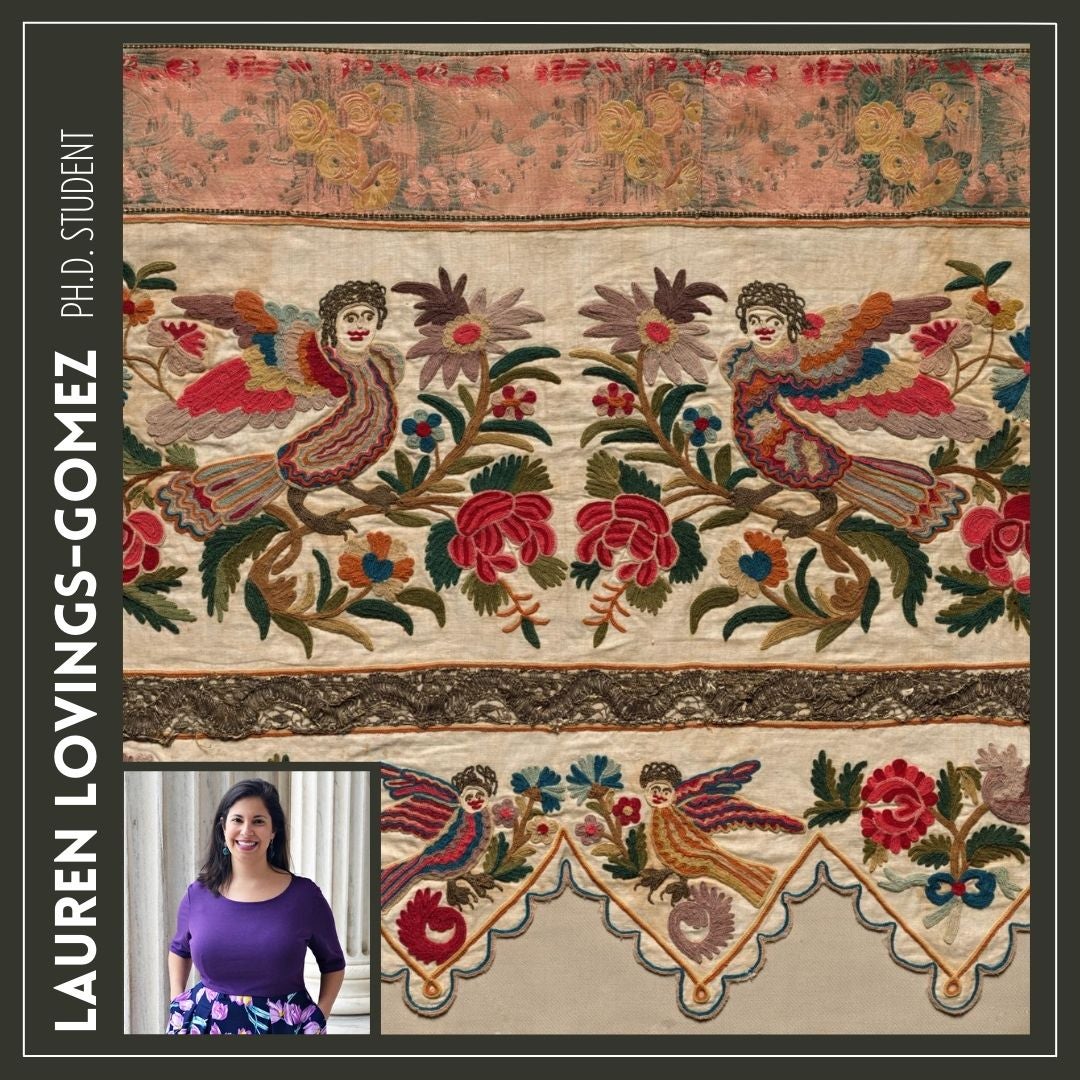Last fall, Lauren Lovings-Gomez published an article entitled "The Lost Narrative of Natalia Shabelsky’s Collection of Russian Textiles” in the Hidden Stories/Human Lives: Proceedings of the Textile Society of America 17th Biennial Symposium. The theme of the symposium focused on the wide human network involved in global textile making, particularly women of color and those often times marginalized by society. In her article, Lovings-Gomez details the life of prominent nineteenth century Russian collector Natalia Shabelsky and traces the history of her collection of indigenous textile designs that were eventually acquired in part by the Cleveland Museum of Art. Lovings-Gomez’s article is also currently cited online under the Natalia Shabelsky collection of textile found in the Cleveland Museum of Arts with "Towel End,” “Border,” and a number of other pieces.
As a second year Ph.D. student in art history, Lovings-Gomez’s research interests are in British, French, and American art during the long nineteenth-century with a focus on Pre-Raphaelitism, Aestheticism, and the Arts & Crafts Movement.
Abstract:
A culturally significant, vibrant group of textiles gathered in the nineteenth century by Natalia Leonidovna Shabelsky, praised by critics and celebrated worldwide, was nearly lost to history. Born in Taganrog, Russia, in 1841, Shabelsky moved after her marriage to a rural estate in the Lebedinsky region where she developed an interest in the indigenous textile practice of ethnic Russia. She collected and preserved examples of embroidery and lace, as towel ends and costume accessories, all filled with traditional motifs such as the Tree of Life, the Sirin, and the Mother Goddess in her various guises. At the end of the nineteenth century, Shabelsky exhibited her collection at numerous world’s fairs. After the 1900 Exposition Universelle in Paris, Shabelsky, her two daughters, and the collection remained in France. Shabelsky died in 1904; her daughters ensured that the collection was properly documented and published. Neither of Shabelsky’s daughters had children; they entrusted Count and Countess Basil Musin Pushkin to exhibit and sell the collection to museums in the United States. In the early 1930s, the Brooklyn Museum, the Cleveland Museum of Art, and the Museum of Fine Arts, Boston, all purchased Shabelsky textiles.
Within Cleveland’s collection, only Pushkin’s name was associated with the original accession records, omitting key provenance information. This unfortunate error led to the deaccession of a portion of this influential collection. My paper will address Shabelsky’s biography, the history of her collection, and its current status in museums and private collections. In keeping with the theme of this conference—Hidden Stories, Human Lives—I hope not only to unravel the narrative of this collection and its hidden story, but to emphasize the necessity of revealing and preserving the histories of women in the arts, in this case Natalia Leonidovna Shabelsky, champion and savior of Russian textiles.
Image: "Towel End," c 1700s- 1800s, Russia, Nizhny-Novgorod province, 18th-19th century, Plain weave linen with polychrome wool & metal thread chain stitch embroidery; applied silk ribbon &metal thread trim, 38 x 43 cm, Cleveland Museum of Art


